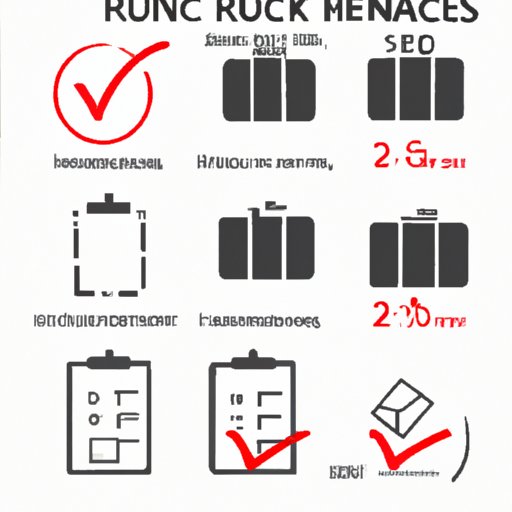
Introduction
Has a package arrived at your doorstep that you did not order or want? Or have you received an item that does not work or is not the right size or color? Whatever the reason, returning packages to the sender can be a daunting task. However, with the right information and approach, it can be relatively easy and stress-free. In this article, we will provide a step-by-step guide on how to return packages to the sender, discuss common reasons for returns, provide guidance on laws and regulations, offer tips and tricks, and recommend optimal shipping providers.
Step-by-step guide
Returning packages may seem like a hassle, but with a step-by-step guide, it can be easy and stress-free. Here’s how:
A. Contact the company
The first step is to contact the company that sent the package. Most companies have return policies that explain how to return items. You can usually find the policy on the company’s website or in the delivery package.
B. Prepare the item for return
Once you have contacted the company, prepare the item for return. This may involve repackaging the item if the original packaging is no longer usable, or ensuring that all parts are included and the item is in its original condition.
C. Choose a shipping method
Choose a shipping method that is convenient for you. You can either use the return label provided by the company or choose your own shipping method.
D. Ship the item and track it
Ship the item and track it to ensure that it reaches the destination safely and on time.
E. Follow up with the company to confirm the return
Follow up with the company to confirm that they have received the item and that the return has been processed.
Common reasons for returning packages
There are several reasons why someone might want to return a package. Here are some of the most common reasons:
A. Canceled orders
If you have canceled an order but still receive the package, you may need to return it. Contact the company and follow their return policy to ensure that you receive a refund.
B. Wrong or damaged items
Companies occasionally make mistakes, and you may receive the wrong item or a damaged item. In this case, contact the company and request a replacement or a refund.
C. Incorrect size or color
It’s frustrating to receive an item that does not fit or match the color you ordered. Check the return policy and follow the steps to return the item for a replacement or a refund.
D. Unwanted gifts
If you receive a gift that you do not want or need, you can return it to the sender if they have included a return label. If not, you may need to contact the sender to arrange for a return.
Laws and regulations
The process of returning items is governed by laws and regulations that protect the rights of consumers. Some of the regulations include:
- The Federal Trade Commission’s Consumer Protection Act, which provides guidelines for refunds and returns
- The Uniform Commercial Code, which outlines the rights and responsibilities of buyers and sellers in transactions
- The Magnuson-Moss Warranty Act, which requires companies to provide a written warranty for products costing more than $15
Compliance with these regulations is critical to ensure that the return process is fair and efficient.
Optimal shipping providers
There are several shipping providers that offer convenient and cost-effective return services. Some of the leading providers include:
- UPS
- FedEx
- USPS
Each provider has its own strengths and weaknesses. For example, UPS is known for its reliable tracking and delivery times, while FedEx is known for its speed and security. USPS can be a cost-effective option for smaller packages.
International shipping
Returning packages internationally can be more challenging than domestic shipping. You may face additional customs regulations and legal restrictions. It is important to research the regulations and restrictions that apply to your situation to ensure a smooth and successful return.
Tips and tricks
To make the return process as smooth as possible, consider these tips:
- Read the return policy carefully before returning an item
- Keep all receipts and documentation related to the return
- Choose a shipping method that is reliable and trackable
- Make sure the item is properly packaged to prevent damage during shipping
- Follow up with the company to ensure that the return has been processed
- Avoid common mistakes such as failing to read the return policy, returning items outside the stated timeframe, or failing to provide all necessary documentation
Conclusion
Returning packages to the sender may seem like a daunting task, but with the right information and approach, it can be relatively easy and stress-free. By following a step-by-step guide, understanding the most common reasons for returns, knowing the laws and regulations that govern the return process, researching optimal shipping providers, and following helpful tips and tricks, you can ensure a successful return.




